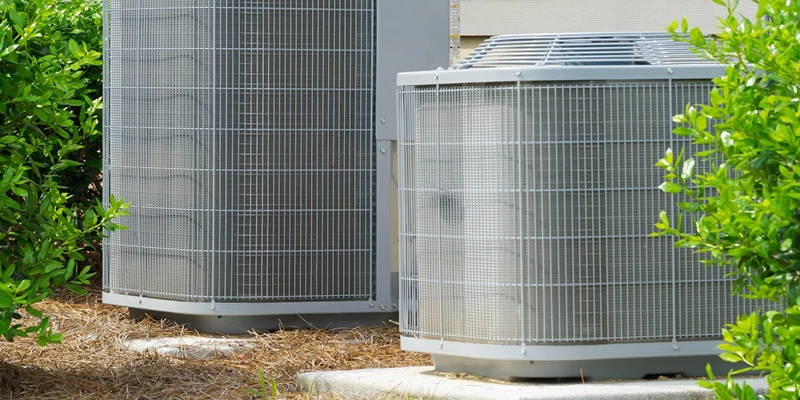How to Size AC Unit for the House

If you’re shopping for a new air conditioner, the unit’s size is one of the most important factors to consider. Purchasing the correct size AC unit ensures it will help you keep cool this summer. Use this guide to learn how to size a window AC unit or central air conditioner.
Why Sizing Your AC Unit Matters
Selecting a properly sized cooling system is essential for comfort and efficiency.
If you buy an undersized air conditioner, the equipment may fail to keep up with cooling demand on hot, humid summer afternoons, even when running nonstop. This also increases your energy bills, despite your efforts to save money by purchasing a smaller system
On the other hand, if you buy an oversized air conditioner, it will reach the target temperature too quickly. This short-cycling behavior increases wear and tear, leading to premature breakdowns. Cycling on and off frequently also makes it impossible for the AC to adequately dehumidify your home, leaving you feeling cool but clammy.
How to Size a Window AC Unit or Central Air Conditioner
The cooling capacity of an air conditioner is measured in British thermal units (Btu). One Btu is about the amount of heat generated by a birthday candle. You’ll find window units with cooling capacities ranging from about 5,000 to 12,500 Btu, which indicates the amount of heat the unit can remove from a room per hour.
Central air conditioners are much larger, so they’re measured in tons, which is equivalent to 12,000 Btu. Most residential units range from 1.5 to 5 tons, or 18,000 to 60,000 Btu.
If you’ve ever wondered what size central air unit you need, or how to size a window AC unit, be aware that square footage is the number-one factor. Indeed, it’s often the only factor listed in rule-of-thumb guides. On average, an air conditioner needs 20 Btu of cooling power per square foot of living space. However, smaller areas tend to require more than 20 Btu per square foot, while larger rooms need less than 20 Btu per square foot.
But square footage is far from the only consideration you should make. These additional factors also affect what size central air or window unit you need:
- Climate: A home in Phoenix, Arizona needs a larger AC than a house of the same size located in Northern Michigan.
- Number of windows and orientation to the sun: South-facing rooms with a lot of windows heat up much faster and need more cooling power than north-facing rooms.
- Home insulation levels and overall air-tightness: The better your home is at retaining cooled air, the smaller AC unit you need.
- Internal heat gain: If you use heat-generating appliances and electronics during the day, you need more Air Conditioning to counteract this heat gain.
- Occupancy: The more people who live in your home, the larger the AC should be.
Let Aire Serv® Help You Size Your Air Conditioner
The principles in this guide are merely rule-of-thumb estimates. To get the most accurately sized AC unit, you need to hire a professional. Cooling experts use Manual J, the industry standard for sizing HVAC systems established by the Air Conditioning Contractors of America (ACCA). This takes all of the factors outlined above and determines how they affect your home’s overall cooling load to calculate the ideal AC unit size.
Since you need a licensed technician to install your central air conditioner anyway, it makes sense to team up with Aire Serv to ensure you make the most cost-effective purchase. For help sizing your new air conditioner, or to schedule other cooling services, please contact us today!
 Click to call
Click to call


